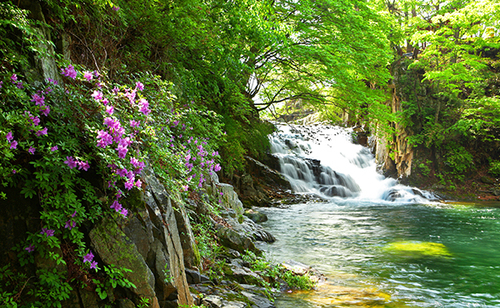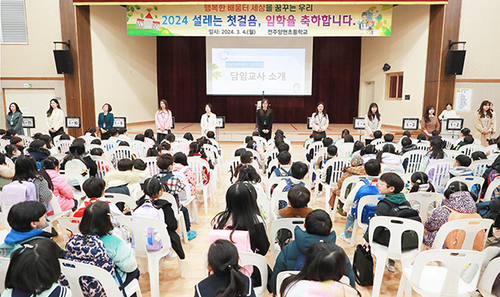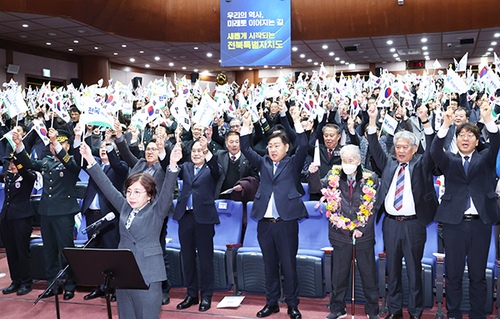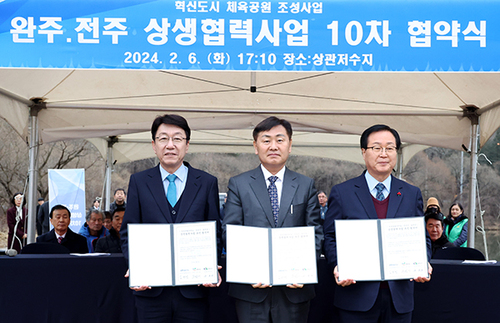| ▲ '바람의 화공'으로 불리는 예현(藝泫) 이선화(李善和) 작가의 네 번째 개인전 '화양연화'가 오는 11월 1일부터 15일까지 전북 진안 마이산 명인명품관 갤러리에서 옛 선조들의 풍류놀음과 풍속화 및 선비들의 원초적 욕망이던 책가도 등 세련된 고품격 민화 45점을 전시한다. 【 예현(藝泫) 이선화(李善和) 작가가 봄이 드리운 들판에서 여흥을 즐긴다는 뜻으로 조선시대 풍속화가 신윤복의 작품을 민화로 복원한 '상춘야흥(賞春野興)'】 / 작품사진 제공 = 이선화 작가 © 김현종 기자 |
|
| ▲ 예현(藝泫) 이선화(李善和) 작가의 작품 '후원유연(後園遊宴)'. © 김현종 기자 |
|
'바람의 화공'으로 불리는 예현(藝泫) 이선화(李善和) 작가의 네 번째 개인전 '화양연화'가 오는 11월 1일부터 15일까지 전북 진안 마이산 명인명품관 갤러리에서 열린다.
이번 개인전에서는 옛 선조들의 풍류놀음과 풍속화 및 선비들의 원초적 욕망이던 책가도 등 세련된 고품격 민화 45점을 전시한다.
전북 완주 출신인 이선화 작가는 전국에서 개최된 각종 미술대전에서 대상을 휩쓸 만큼, 출중한 실력을 갖췄다.
하지만, 민화를 배우겠다는 수강생들이 늘어나며 장수문화원 등 각 지역 수강생들을 찾아다니며 지도강사로 활동해 몇몇 단체전에 한두 점씩의 작품을 선보였을 뿐 좀처럼 이선화 작가의 작품을 감상하기 힘들어 이번 네 번째 개인전에 관심이 모아지고 있다.
현존하는 현시대 민화(民畵)는 18~19세기 이후 작품들이 민족정서를 담은 본격적인 민족문화 작품으로 인정받고 있다.
그러나, 우리나라보다는 일본에서 우리 민화의 가치를 더 주목하며 가치 있는 작품으로 떠올랐다.
그 이전까지 문인화가(文人畵家)나 정통 화원화가(畵員畵家)가 아닌 일반 백성이나 무명의 화가가 그린 그림으로 지칭해 속화(俗畫)라 부르며 아무도 주목하지 않을 정도로 속된 그림을 말하는 의미의 '민화'로 불렸다.
우리나라 민화는 고구려 고분벽화에서부터 그 원류(源流 = 어떤 사건이나 현상 따위가 비롯되는 원천)에서 찾아볼 수 있다.
고대 고분의 민화는 각 민화에 뒤섞여 있는 불교ㆍ도교 등 외래적 요소들이 강해 우리 민족의 본래 그림이라는 정의조차 온전하게 이뤄지지 않고 있는 것이 현실이다.
우리의 민화는 앞선 의미의 속된 그림ㆍ허튼 그림이라는 의미도 지니고 있었지만, 넓은 의미로 살펴보면 왕궁이나 사대부를 비롯 모든 국민이 자유롭게 그리던 회화의 한 장르로, 순수 감상용이 아닌 실용적 목적으로 그린 작가 미상의 그림이라는 의미도 함께 품고 있다.
이런 점에서 향후 우리 민화를 온전하게 정의하기 위해서는 우리의 음악이 궁중음악ㆍ선비음악ㆍ풍류방 음악으로 분류돼 잡가와 판소리ㆍ민요 등으로 불리고 있는 것처럼 문학 역시 민담과 구전설화 등을 우리의 문학으로 정의해 왔듯 민화 역시 이 같은 절차를 밟아야 한다는 지적에 힘이 실리고 있다.
실제로, 민요는 민중들 사이에 저절로 생겨나 전해지는 노래를 두루 일컫는 말이 민요로 정의됐다.
이에 따라, 민요는 특정 악보에 기재되거나 글로 쓰인 것이 아니라 구전(口傳)된 가락을 이은 것이었다는 점에서 엄격한 수련을 거치지 않고 일상생활 속에서 자연스럽게 익힐 수 있는 음악이다.
우리의 민화는 처음 공동생활을 영위했던 시기부터 생활상과 기원을 담은 그림들이 그려지기 시작했을 것으로 추정되고 있다.
이후 신석기ㆍ청동기 시대에 이르는 반구대(천전리ㆍ대곡리) 암각화 등이 그려지긴 했지만, 채색형태의 그림들도 있었을 것으로 추론된다.
처음에는 원시적인 그림으로 시작해 차츰 현재와 같은 세련되고 함축적인 의미의 그림으로 진전되었을 것이라는 해석에 무게감이 실리고 있다.
☞ 아래는 위 기사를 구글 번역이 번역한 영문 기사의 '전문' 입니다.
구글 번역은 이해도를 높이기 위해 노력하고 있으며 영문 번역에 오류가 있음을 전제로 합니다.
【Below is the 'full text' of the English article translated by Google Translate.
Google Translate is working hard to improve understanding, and assumes that there are errors in the English translation.】
Artist of Wind, Yehyeon Lee Seonhwa 'Solo Exhibition'
Hwayangyeonhwa… From November 1st to 15th, Jinan Masterpieces Hall
Reporter Lee Yong-chan
Artist Yehyeon and Lee Seonhwa, who is called 'The Painter of Wind','s fourth solo exhibition, 'The Flower of Love,' will be held from November 1 to 15 at the Myeongin Masterpiece Gallery in Maisan, Jeollabuk-do.
In this solo exhibition, 45 sophisticated and high-quality folk paintings, such as the pungryu play and folk tales of the ancient ancestors, and the original desire of scholars, Chaekado, are on display.
Born in Wanju, Jeollabuk-do, artist Lee Seon-hwa has won the grand prize in various art competitions held across the country.
However, as the number of students who want to learn folk tales increases, I visit students in each region, such as the Jangsu Cultural Center, and work as a tutor to show one or two works at several group exhibitions. are being gathered
Existing contemporary folk paintings are recognized as authentic national cultural works that contain national sentiments since the 18th and 19th centuries.
However, it emerged as a valuable work by paying more attention to the value of Korean folktales in Japan than in Korea.
Prior to that time, it was referred to as a painting drawn by an unknown artist or a general public who was not a literary artist or an orthodox painter, and is called a sok painting. It was called 'Minhwa' with meaning.
Korean folktales can be found in Goguryeo tomb murals and their origins.
The reality is that the folk tales of ancient tombs are not fully defined as the original paintings of our people because of the strong foreign elements such as Buddhism and Taoism mixed in each folk tale.
Our folk tales also had the meaning of vulgar paintings and vulgar paintings in the previous meaning, but in a broader sense, it is a genre of painting freely drawn by all citizens, including royal palaces and nobles, and paintings of unknown artists painted for practical purposes rather than pure appreciation. It also has the meaning of
In this regard, in order to fully define our folktales in the future, just as our music is classified into royal court music, scholarly music, and Pungryubang music and is called japga, pansori, and folk songs, literature also includes folktales and oral legends as our literature. As it has been defined, the point that Minhwa should follow this same procedure is gaining strength.
In fact, folk songs are defined as songs that are spontaneously generated and transmitted among the people.
Accordingly, folk songs are music that can be learned naturally in everyday life without undergoing rigorous training in that they are not written or written in specific sheet music, but are handed down melodies.
It is estimated that our folk tales began to be drawn from the time when we first started living together.
Afterwards, although petroglyphs from Bangudae (Cheonjeon-ri, Daegok-ri) from the Neolithic and Bronze Ages were drawn, it is inferred that there were also colored paintings.
A weight is put on the interpretation that it started as a primitive painting at first and gradually developed into a painting with the same sophisticated and connotative meaning as the present.






















 많이 본 뉴스
많이 본 뉴스











